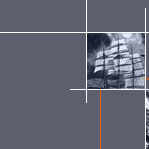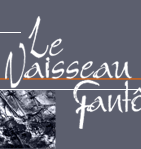|
Maclean's magazine, June 15,
1951
2/2
The Fiery Phantom that sails
Bay Chaleur
By Ian Sclanders
(suite)
The Ghost Won the Race
Fragrant little orchids and pitcher plants
and wild cotton grow in the swamps, and there are stretches
where the trees are stunted because there is no soil, only
peat moss. There are quicksands that will swallow you, and
fine white beaches on which the sea tosses up black chunks
of coal from a submarine vein, and in the spring herds of
seal pass on the ice floes.
Lester Marks, keeper of the Miscou
light and fog-alarm station, tells of being on the fishing
grounds with a fishing companion at night, drifting for mackerel.
They saw a lantern at a ship's mast and it cast such a strange
glow they decided to wait and watch. The lantern was motionless
until dawn, when it faded like a star. Marks says he has also
seen the Fire Ship when it was a vessel belching flames and
smoke. He holds that its appearance invariably forecasts a
storm.
One night several years ago the
spectre sailed past Lameque, the business centre of Shippigan
Island off New Brunswick, at its blazing best. There were
a dozen schooners at the wharf and George LeRiche, Shippigan
manager of Robin, Jones, Whitman, persuaded fishermen to sail
in pursuit. They piled on canvas and chased it to the Quebec
side of Bay Chaleur without gaining an inch.
Mrs. Marie Allard of Pokemouche,
who died recently at 104, often said that people who were
very old when she was young told of seeing the Fire Ship from
their childhood. One of Canada's first amateur photographers
in the tintype days, she tried often to bring the apparition
within camera range but always failed. Nor has anyone else
been able to photograph it.
Mrs. Allard referred to the spectacle
as le feu du mauvais temps -the bad weather light- and denied
it had the shape of a ship. She said it was a light which
rose from the water before a gale. Her son, Msgr. Auguste
Allard, also calls the Fire Ship a weather light and contends
it's simply a ball of fire "that our scientists will
explain some day".
One scientist who tried to explain
it was Dr. J. Orne Green of Boston, a professor at Harvard
Medical School. He was so eager to solve the mystery that
in the 1890s and the first decade of this century he spent
several weeks each summer in the Bay Chaleur region.
A paper published in 1907 by
Dr. W. G. Ganong, a New Brunswick scholar who became professor
of botany at Smith College, Northampton, Mass., summed up
Dr. Green's research: "He came to the conclusion that
while the stories were mostly exaggerated and distorted there
was some basis for them in fact, and there does occur... some
natural light of the general nature of St. Elmo's fire."
Ganong was one of New Brunswick's
most versatile scholars. While working at Smith College, he
returned to his native province for his vacations and won
an outstanding reputation as a historian, cartographer and
authority on the language and customs of Mic mac and Maliseet
Indians. More than eight hundred places in New Brunswick have
Indian names. Ganong tracked down the meaning of them all.
In addition Dr. Ganong carried on his own investigation of
the Fire Ship and announced:
"Grouping together all the
evidence it seems plain,
"First, that a physical
light is frequently seen over the waters of Bay Chaleur and
vicinity;
"Second, that it occurs
at all seasons, or at least in winter as well as summer;
"Third, that it usually
precedes a storm;
"Fourth, that its usual
form is roughly hemispherical, with the flat side to the water,
and that at times it simply glows without much change of form,
but at other times it rises into slender columns, giving an
appearance capable of interpretation as the flaming rigging
of a ship, its vibrating and dancing movements increasing
the illusion;
"Fifth, its origin is probably
electrical, and it is very likely St. Elmo's Fire."
A Wailing Pirate Crew
The explanation offered by Dr. Green and Dr. Ganong has been
rejected by many fellow scientists, who note that St. Elmo's
Fire -electricity slowly discharged from the atmosphere to
the earth-ordinarily shows itself as a tip of light on a pointed
object, such as a church steeple or a mast. In addition, it
is accompanied by a crackling noise. Bay Chaleur's apparition,
the dissenters say, is not attracted by pointed objects, appears
only over expanses of water, and is silent.
Another theory is that the Fire
Ship is inflammable gas, which could conceivably be released
from a submarine seam that litters Miscou Island's white beaches
with lumps of bituminous coal.
But what would ignite the gas?
And if it rose from one spot, as it presumably would, why
could it not be approached? Why would it always remain the
same distance from boats which chased it?
Still another idea is that the
Fire Ship is some kind of phosphorescent marine life. Biologists
of the Department of Fisheries chuckle at this, since the
Fire Ship has been seen in winter when Bay Chaleur was frozen.
A nautical phantom has to have
a legend behind it. According to Caraquet folklore, the Fire
Ship was once a corsair and met with a horrible fate in Bay
Chaleur in the seventeenth century. This tradition is recounted
in a poem by Arthur W. H. Eaton:
Strange is the tale that the fishermen tell:
They say that a ball of fire fell
Straight from the sky, with a crash and a roar,
Lighting the ship from shore to shore.
That was the end of the pirate crew,
But many a night a black flag flew
From the mast of a specter vessel, sailed
By a specter band that wept and wailed.
West of Caraquet, at the head
of Bay Chaleur, the Fire Ship is generally linked with the
Marquis de Malauze, a French frigate driven into the Restigouche
River and sunk by the British in 1760. This version might
be more acceptable if what's left of the Marquis didn't repose
peacefully in a monastery garden at the Indian Reserve at
Cross Point, Quebec. After lying on the bottom for 179 years
her hull was salvaged timber by timber by Capuchin monks,
who, with the aid of a sea captain, eventually managed to
fit the pieces together.
East of Caraquet, at the mouth
of Bay Chaleur, the Fire Ship is called the John Craig. That
was the name of a barque which sank off Shippigan Island around
1800. All hands drowned except a cabin boy, who reached shore,
then died of exhaustion.
Cooper Union's Ralph Childs points
out that ghost ships have been reported since the beginning
of nautical history, and are described in earliest literature.
Childs popped into the limelight as an authority on them when
he addressed a meeting of the New York Folklore Society a
few years ago. A digest of his speech was published in hundreds
of U.S. and Canadian newspapers.
For weeks afterward he was snowed
under by mail from all over the continent, from individuals
who were interested enough to offer him further information.
He soon gathered that almost everybody had seen a ghost ship
except himself!
Childs grew up on the coast of Maine, has long been a yachtsman,
and was in the U.S. Coast Guard during World War Two. But
he has encountered ghost ships only in books, in musty archive
records, and in letters from self-appointed assistant researchers.
He has accumulated a massive
amount of data about fifteen which haunt North America's northeastern
shores, and sketchy data on several others. Bay Chaleur's
Fire Ship is outstanding among five marine apparitions which
resemble burning vessels, he says. Outside of collecting historical
evidence, however, Childs hasn't much faith in ghost ships.
"I believe," he says,
"that there are nautical phenomena which people mistake
for ghosts. I myself have never seen a phantom ship, I never
expect to see one, and I don't believe they exist."
 Retour
au début de l'article Retour
au début de l'article

|






